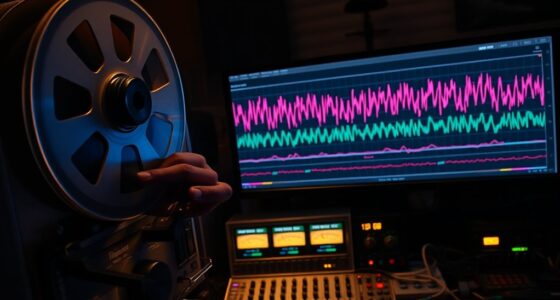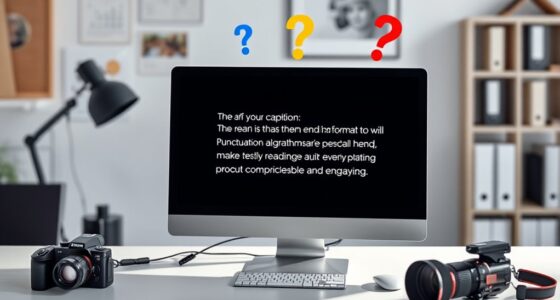To improve transcriptions of noisy recordings, start by understanding how noise masks speech through spectral masking and the noise floor. Use signal processing tricks like spectral subtraction and adaptive filtering to reduce stationary and changing noises, ensuring clearer audio. Advanced techniques, including machine learning, can further distinguish speech from noise dynamically. Applying these methods and optimizing your recording environment can markedly boost clarity. Keep exploring, and you’ll discover even more ways to enhance your audio quality.
Key Takeaways
- Use spectral subtraction to estimate and remove stationary noise, improving speech clarity before transcription.
- Apply adaptive filtering to dynamically track and suppress non-stationary noise patterns during recording.
- Combine spectral subtraction and adaptive filtering for enhanced removal of both steady and fluctuating noise sources.
- Incorporate machine learning models, especially deep learning, to distinguish speech from complex background noise.
- Ensure high-quality recordings by capturing in quiet environments, close-miking, and monitoring audio to minimize noise at source.
Understanding the Nature of Audio Noise
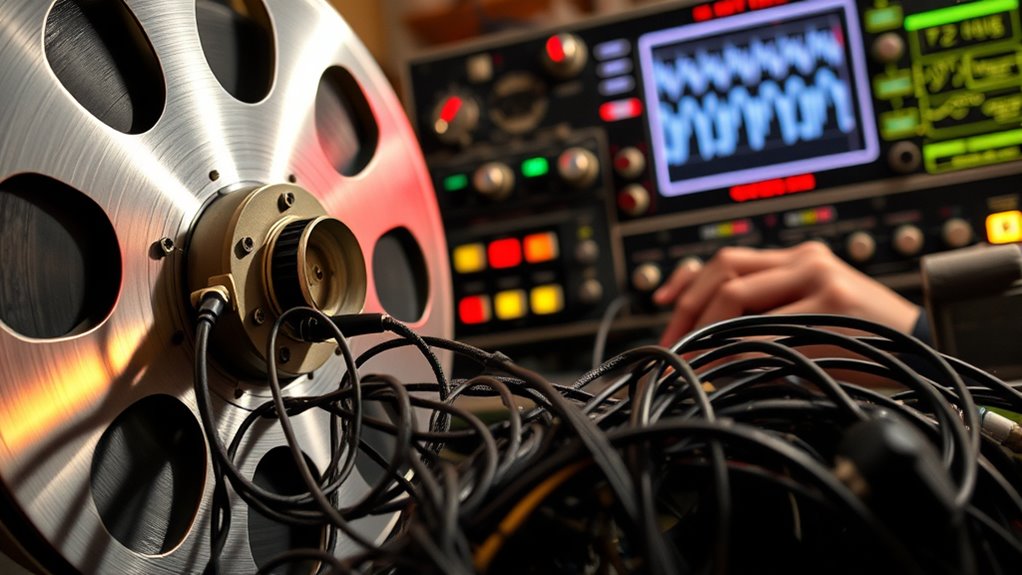
Understanding the nature of audio noise is essential for effective transcription because noise can distort or obscure the spoken words. Noise isn’t just random sound; it often has a spectral masking effect, where certain frequencies hide or blend with speech, making it harder to distinguish words. The noise floor represents the baseline level of background noise present in recordings, which sets a limit on what can be reliably heard. When the noise floor is high, speech signals become harder to detect and transcribe accurately. Recognizing these elements helps you understand why some parts of a recording are more challenging. By grasping spectral masking and the noise floor, you can better anticipate areas needing extra attention or specialized processing to improve transcription clarity. Additionally, using noise reduction techniques can significantly enhance audio clarity by minimizing the impact of background noise.
Basic Signal Processing Techniques for Noise Reduction
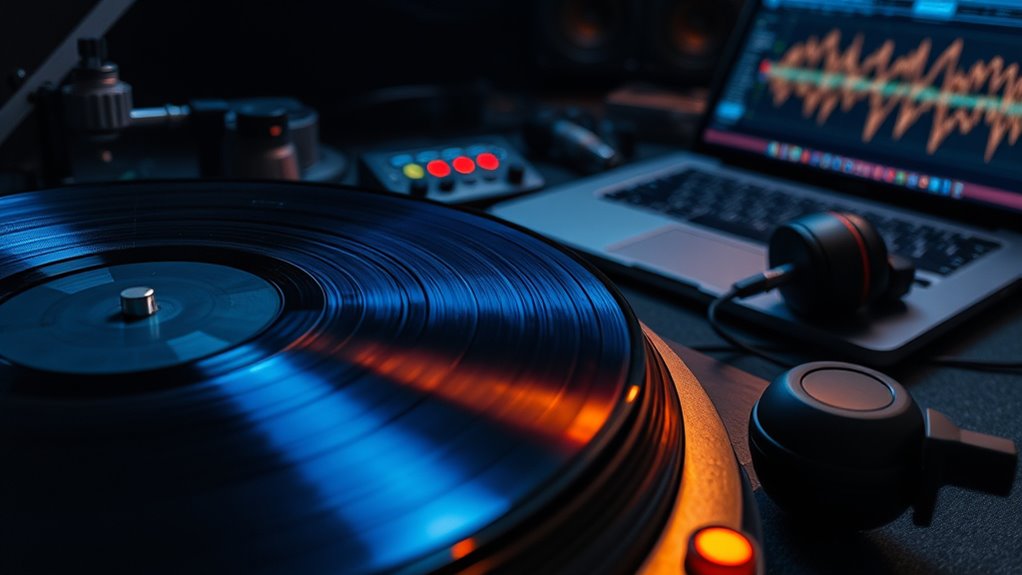
Basic signal processing techniques are essential tools for reducing noise in recordings and improving transcription accuracy. Spectral subtraction works by estimating the noise spectrum during silent parts and subtracting it from the noisy signal’s spectrum, effectively reducing background sounds. Adaptive filtering adjusts filter parameters in real-time to track changing noise patterns, enhancing speech clarity without distorting the voice. Both methods are effective for cleaning up recordings before transcription. Spectral subtraction is simple and efficient but can introduce artifacts if noise estimates are inaccurate. Adaptive filtering is more flexible, especially in dynamic environments, but requires careful tuning. Additionally, understanding the impact of contrast ratio can help in optimizing audio and video settings for clearer signal clarity, ultimately aiding transcription quality. Using these techniques helps you improve audio quality, making it easier to transcribe speech accurately and reliably.
Advanced Filtering Methods to Clarify Speech
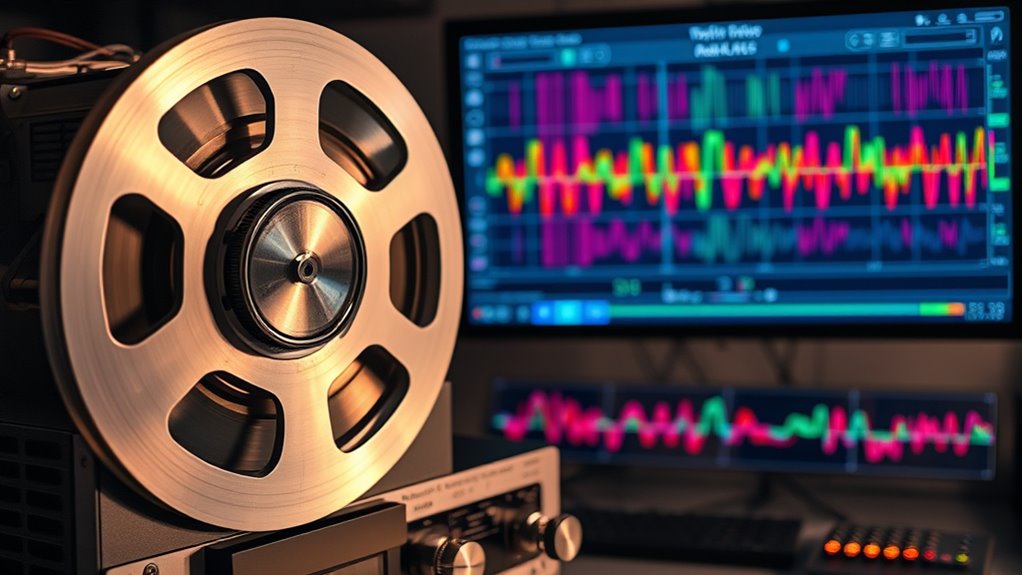
Building on foundational noise reduction techniques, advanced filtering methods offer more precise ways to clarify speech in recordings. Techniques like spectral subtraction and adaptive filtering target noise more effectively. Here’s how they help:
- Spectral subtraction removes noise by estimating its spectrum and subtracting it from the noisy signal, improving clarity.
- Adaptive filtering dynamically adjusts filter parameters in real-time, tracking changing noise patterns for cleaner audio.
- Combining both methods, you can suppress stationary and non-stationary noise sources simultaneously.
- These advanced filters enhance speech intelligibility without overly distorting the original voice, making transcripts more accurate.
- As the demand for accurate transcription increases, leveraging these advanced filtering techniques becomes essential for high-quality recordings.
Leveraging Machine Learning for Noise Suppression
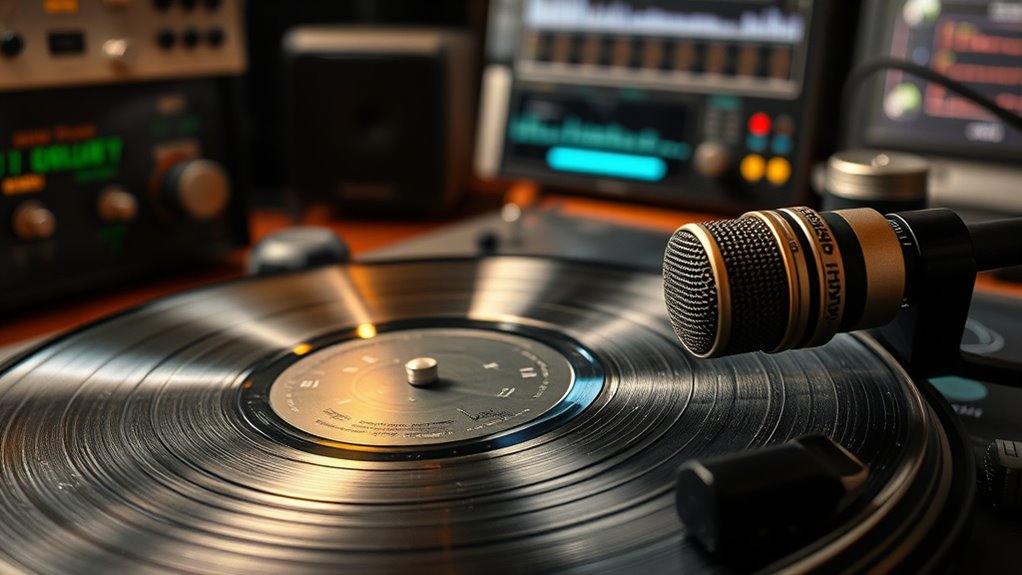
Machine learning has revolutionized noise suppression by enabling algorithms to adapt and improve over time, substantially enhancing audio clarity. Techniques like spectral subtraction now leverage deep learning models to distinguish noise from speech more accurately. Deep learning algorithms analyze large datasets to learn complex noise patterns, making suppression more effective, even in highly noisy environments. These models can identify subtle differences between speech and background sounds, adjusting their approach dynamically. Unlike traditional filters, machine learning-based methods continuously improve as they process more data, reducing residual noise and preserving speech quality. Additionally, adaptive algorithms can respond to changing acoustic conditions in real-time, further improving transcription accuracy. By integrating spectral subtraction with deep learning, you can achieve more precise noise reduction, making transcriptions clearer and more reliable. This advancement allows for more efficient transcription workflows, especially in challenging acoustic conditions.
Practical Tips for Capturing Higher Quality Recordings
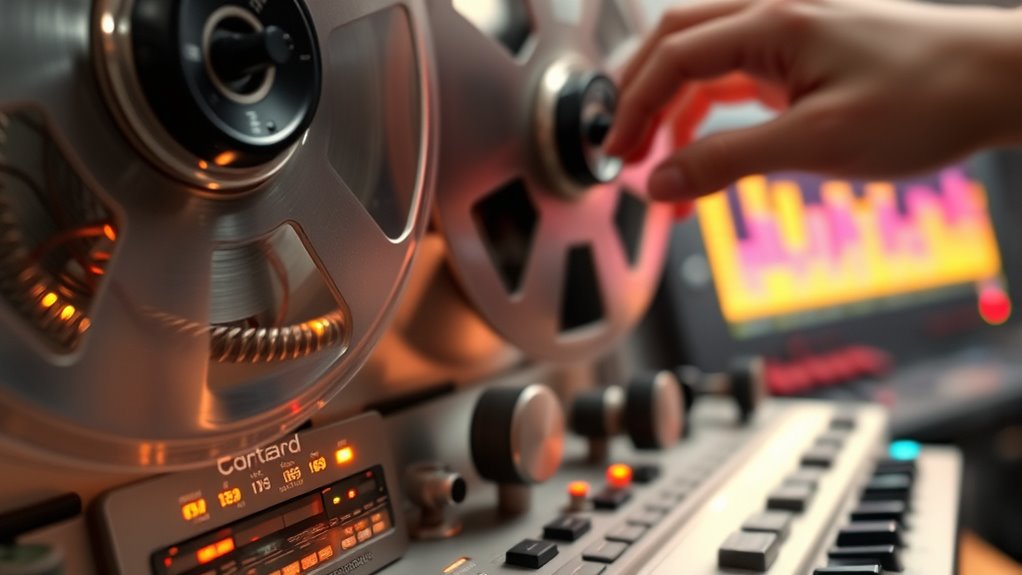
Achieving higher quality recordings starts with paying attention to your environment and equipment. To optimize your audio spectrum and minimize noise, consider these practical tips:
- Choose a quiet space to reduce background noise and reflections that can muddy recordings.
- Strategically position your microphone by placing it close to the sound source and adjusting microphone placement for clarity.
- Use sound-absorbing materials like foam panels or blankets to control echoes and improve signal quality.
- Monitor your recordings with headphones to catch issues early and adjust microphone placement or environment as needed.
- Understand the importance of proper equipment setup and the role of ethical hacking principles, such as systematic assessment and optimization, to ensure high-quality audio capture.
Focusing on proper microphone placement and environment control guarantees cleaner recordings, making subsequent noise suppression and transcription more accurate.
Frequently Asked Questions
How Can I Identify the Type of Noise in My Recordings?
To identify the type of noise in your recordings, start with spectral analysis. This technique helps you visualize the frequency components, revealing whether the noise is broadband, hum, or intermittent. Conduct noise profiling by recording quiet sections, then compare them to your noisy parts. Analyzing these differences allows you to classify the noise, making it easier to apply targeted filtering or noise reduction techniques effectively.
What Software Tools Are Best for Real-Time Noise Reduction?
Imagine capturing clear audio amid chaos—what software tools can help? You should try programs with spectral subtraction and adaptive filtering features, like iZotope RX or Adobe Audition. These tools process sound in real-time, reducing noise while preserving speech quality. They’re user-friendly, powerful, and ideal for live recordings. With them, you gain professional-grade noise reduction, making your recordings clearer and more intelligible instantly.
How Does Microphone Placement Affect Noise Levels?
Microphone positioning plays a vital role in noise levels, as it determines how much environmental acoustics you capture. By placing the mic closer to the sound source, you reduce unwanted background noise and improve clarity. Consider the room’s acoustics too; positioning away from reflective surfaces minimizes echoes and ambient noise. Proper microphone placement helps you achieve cleaner recordings, making transcription easier without solely relying on signal processing tricks.
Can Noise Reduction Algorithms Distort Speech Clarity?
A stitch in time saves nine, and so does careful noise reduction. You might worry that algorithms, like spectral masking or filters, could distort speech clarity. While they’re designed to reduce noise, they can sometimes introduce artifacts that affect speech intelligibility. To avoid this, use adaptive filters carefully, balancing noise suppression with preserving natural sound. Properly tuned algorithms help you maintain clarity without sacrificing the quality of your recording.
What Are the Limitations of Machine Learning in Noisy Recordings?
You might find that machine learning struggles with noisy recordings because it relies on accurate noise classification and spectral analysis. When noise types are unfamiliar or vary unpredictably, algorithms can misclassify sounds, reducing transcription accuracy. Complex background sounds can also hinder spectral analysis, making it hard for models to distinguish speech from noise. These limitations mean machine learning isn’t foolproof in real-world, noisy environments, impacting transcription quality.
Conclusion
Don’t let noisy recordings hold you back. With the right techniques, from basic filtering to machine learning, you can markedly improve your audio clarity. Even if you think your equipment isn’t perfect, applying these tricks can make a noticeable difference. Just take the time to experiment and refine your approach—you’ll be amazed at how much cleaner and more understandable your recordings become. Clearer audio isn’t out of reach; it’s just a few smart steps away.





